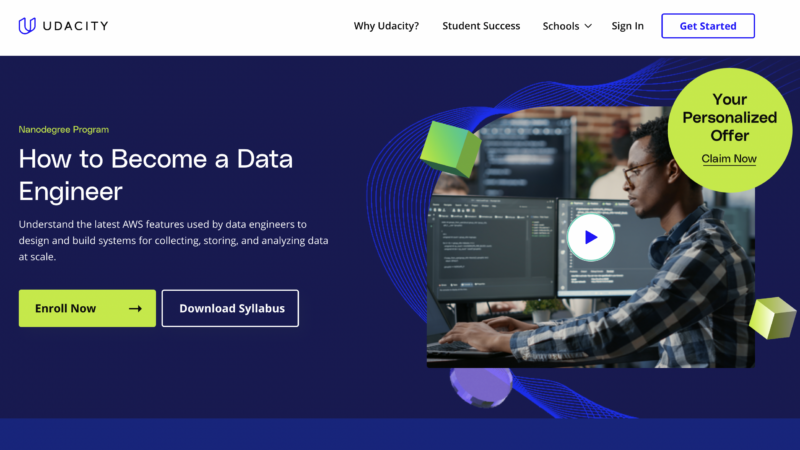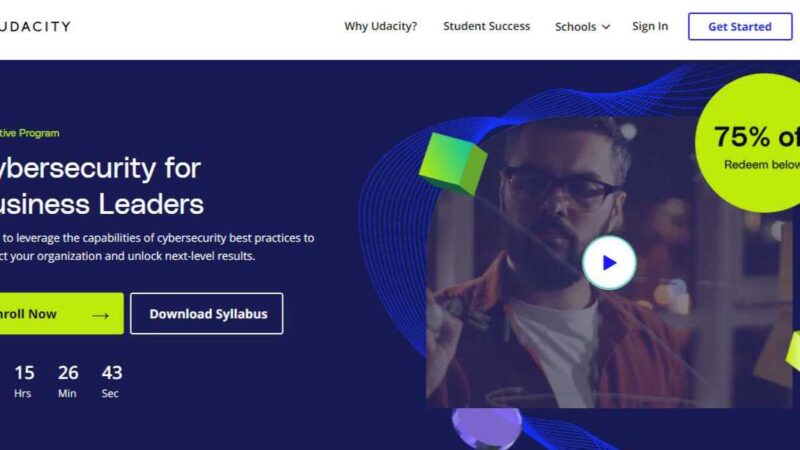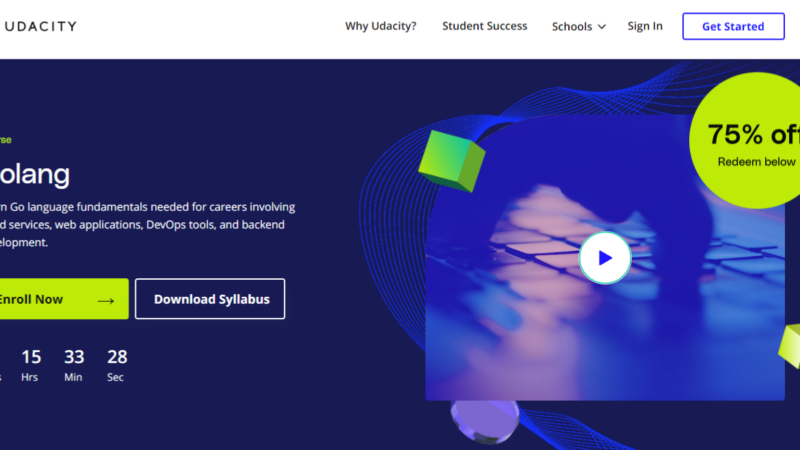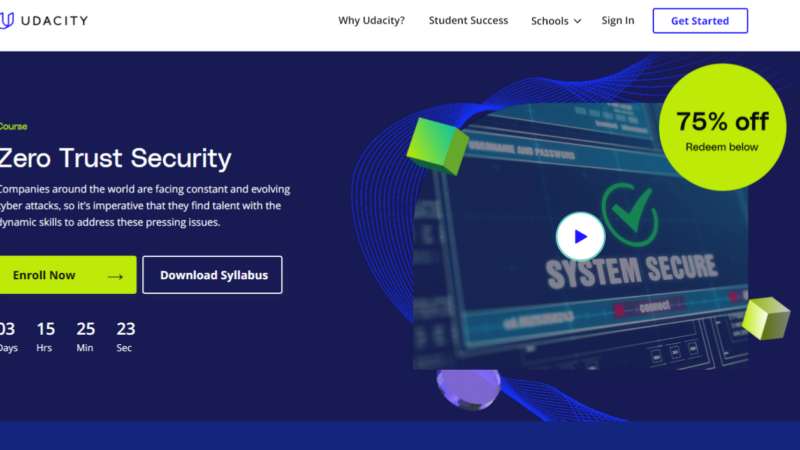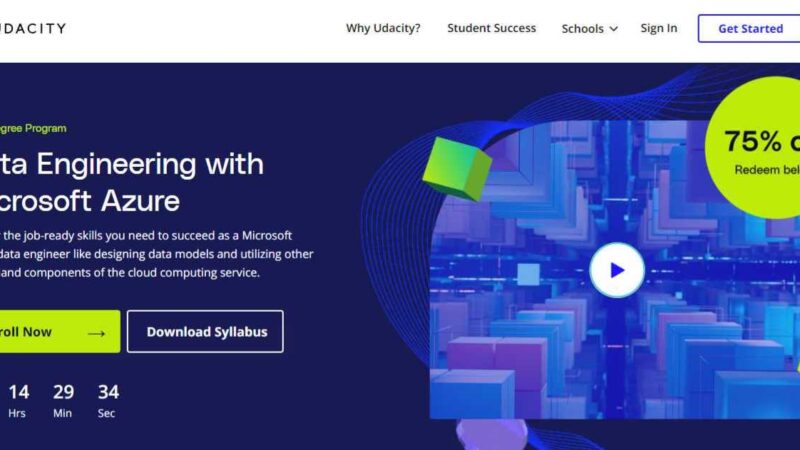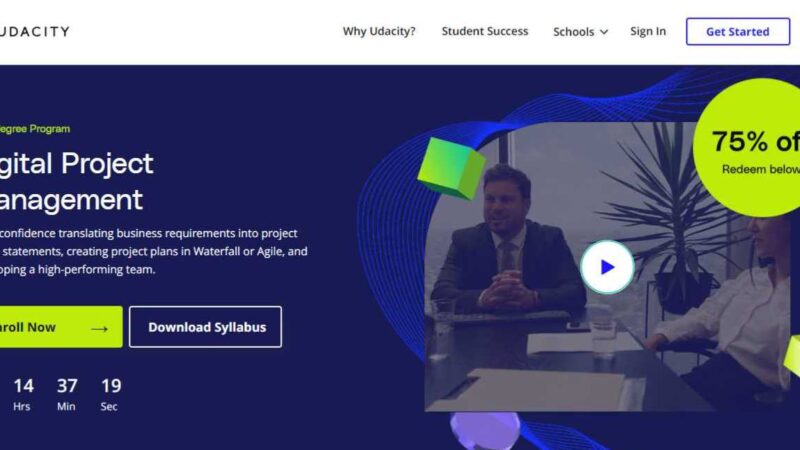Udacity Hybrid Cloud Engineer Nanodegree Review

These days, it is all about the cloud. It is scalable and expansive working with a number of integrations that suit company infrastructures across the industry. As more and more businesses convert to digital methods to manage daily dealings, they have turned to applications, which take a complex environment to create a seamless user experience. That is where a hybrid cloud engineer can come in handy, able to design, manage, and maintain sophisticated cloud environments.
As a professional, they can take on the role of an expert in cloud-based design for IT firms, technology services, or advanced software companies focused on the creation of solutions for next-level solutions. To become a cloud engineer, you’ll need to know the basics of the cloud and how they can be of use to application development. That knowledge is something you can get with the Become a Hybrid Cloud Engineer Nanodegree from Udacity. But, is it worth it? In this review, we’ll break down the course and provide you with all you need to know to decide if this the course (and career path) for you.
About Udacity
Udacity hit the web over a decade ago with the aim of bringing computer science courses to anyone with an internet connection. As the years passed, they were behind some of the top-rated courses, catching the attention of technology giants like Amazon, Google, and Uber. Today, many of their courses are developed in collaboration with these industry-giants, providing hands-on projects as part of their nanodegrees to give learners experience before they start their search for a new career.
Udacity Nanodegrees
Nanodegrees are online courses that take the topic at hand and dive in. Most of them were created with industry-specific techniques in mind, giving learners all they need to know to start a career right after certification. Each nanodegree is designed to fit the industry-specific topic it presents, meant to take little to no time to complete. Apart from an in-depth curriculum, each nanodegree comes with:
Flexible Learning
Learn at your own pace from anywhere at any time.
A mentor
If you ever get stuck, rest assured that someone is there to help
A large community with weekly meetings for check-ins
Get to know your peers and make connections before you even land a job
Hands-on projects
Learn how professional get the job done with projects that follow their techniques
Career service including interview prep
Partake in a mock interview to be sure you do your best for the big day
Experienced instructors
Enjoy instructors with industry experience and impressive academic portfolios
Are There Any Prerequisites?
Anyone can sign up and take this course without any prior knowledge. There is no test to take before, letting you get in and get done no matter where you are in your journey to becoming a hybrid cloud engineer. Udacity however, suggests that those wanting to take the course will do well to have a few bits of knowledge under their belt, which include:
- A basis of command line with platforms like Linux or Windows
- An understanding of virtual machines and how hypervisors work
- Knowledge about all of the most basic web servers
- An understanding of basic databases and SQL
Meet the Staff
As this course was created in collaboration with Nutanix, their instructors come directly from the source. Each of them has a brag-worthy career portfolio and academic background, with over three decades of combined industry experience. Meet the staff of the Hybrid Cloud Engineer Nanodegree.
Mark Lavi
Mark is the principal DevOps advocate for Nutanix. He has more than two decades worth of experience in the field, working with some of the best in Silicone Valley. He’s worked with a long list of top companies including CNN, Netscape, and News Corp. From development to management and all around, he’s got a ton of insight that he is ready to share to prepare new and anxious learners.
Cees van Eijk
Cees has been a product manager, big data analyst, and course developer throughout his career. All of these positions have helped him create a well-rounded look at the field, providing advice and insight to future career professionals heading to the field. His current position as senior education manager entails him overseeing a team of product managers, guiding them toward the best practices for software-driven solutions for businesses making the digital conversion.
Course Breakdown
This course is meant for professionals in the world of data that are looking for innovative ways to manage infrastructures. As companies get deeper into development and increase in complexity, they are turning to the cloud for advanced scalability. The course tackles these issues, split into three detailed sections followed by a hands-on project. Each of the sections is listed in detailbelow.
Modern Private Cloud Infrastructure
A hyper-converged infrastructure (HCI) is an advanced method of data analysis that compresses the entire data stack. Throughout the course, learners will work with HCI and Nutanix’s Prism web console to learn the basics of cloud clusters. There is also in-depth information about data protection and pointers on the importance and initiation of backups. This section is meant to provide learners with all they need to know to create and manage cloud systems that fit standards set by the industry.
Project: Designing a Private Cloud Solution
Using an e-commerce application as an example, you’ll develop a private cloud solution to deploy and protect it. This includes working across servers and VM applications, all of which will come in handy from day one in your new career.
On-Premises Private Cloud Automation
One of the key necessities of today’s cloud-based applications is automation. This will eliminate IT interaction, freeing up time for development. With automation, repetitive tasks and busy work are taken care of by the constructed infrastructure, something that many companies are interested in. All of this is done with the help of Nutanix Prism Central, giving learners further hands-on training with the platform.
Project: Develop a Three-Tier Web Application
In this project, you’ll design the blueprints for a three-tier application for a software engineer. You will be left to work on everything from start to finish, testing deployment, and securing configuration. You’ll need to think in terms of teamwork, brainstorming ideas of different environments and scalable infrastructures to make their wishes come true.
Public and Hybrid Cloud Management
In this section, you’ll learn the major differences between private and hybrid clouds. This will help with the augmentation of automation and the extension of infrastructures into multi-layer cloud infrastructures. By the end, you’ll have a solid idea of the construction of hybrid cloud workloads and techniques to manage them that immerse with today’s multi-layer applications.
Project: Hybrid Cloud SaaS: Continuation of Three-Tier Web Application
Working with the application you developed in the previous section, you’ll take it to the next level by extending it into a hybrid cloud atmosphere. You’ll work with both small and medium scale deployments, seeing the difference hands-on to be prepared from day one in your new career.
How Much Time Does It Take?
As an estimate for learners that are looking to take this course, Udacity claims that it will take about three months to complete the course, dedicating anywhere from 5 to 10 hours per week. Some may have more time to dedicate than others or just have more of a push to complete the course. One part of the flexibility that comes with online courses is the ability to login and learn at anytime from anywhere. Though you may have to keep up with a few of the deadlines, you’ll be on your own to decide the time it takes, though you may not want to drag on. More on that in the next section.
What’s This Going to Cost Me?
We mentioned earlier that you might not want to drag on and here’s why. The longer you take, the higher the cost. When you sign up for a nanodegree, you’re paying for access, which comes with a monthly price. That being said, the time it takes matters, and the faster you finish, the less you’ll pay in the long run.
There are options to pay per month, where you can take as long as you like as long as you’re keeping up with the due dates of your projects. Going this route, you’re looking at $359 per month. The other option takes Udacity’s estimated time to complete into account, allowing learners to pay upfront and enjoy a discount. For the three months of access to all material and all the Udacity perks for the duration of the course, the total is $927.
Reviews by Real Learners
This is an all-new course hitting the floor in December of 2020. There are not any reviews as of yet about how the course plays out but, there are plenty of reviews from previous learners who chose nanodegree from Udacity. Here is what a few of them had to say:
“The quality of the content does seem to be a step above most other online learning MOOC platforms and there is a lot of depth to each of the courses.Over the years, the instructor and mentor quality of the courses have improved, and one wouldn’t need to look far to find a professional in their chosen Nanodegree.” – Felipe B.
“Great & well-rounded degree; very personalized timeline you can tailor it on your busy lifestyle, a weekly session with your mentor to answer any question you have in addition to a great app that connects you to other students and mentors 24/7 for any inquiries, lastly you work on real-life projects that you will face in your career. Overall giving you a great boost of confidence in the field and relief that you have got people to back you up.” Hazem E.
“Great experience, the most significant parts of Udacity Nanodegree are the Community in which we interact with each other as students and get in touch with Tutors to further explain any topic or ask Q, and the Project which give you exposure to real work how it’s done.” – Mal O.
Job Outlook
Cloud Engineer was named one of the most in-demand tech jobs of 2019. As more business across industries makes the switch to automated cloud-based development, they are in need of a professional that can oversee their conversion. Cloud-based roles from 2015 to 2018 rose 108%, creating a promising outlook for the future of cloud-based technologies. Salaries are in the 6 figures starting out and rise well up to $150,000 per year for those with unmatched expertise. That being said, the job market is booming, expecting to grow as technology advances and integrations improve.
Those interested in a career as a hybrid cloud engineer will surely find a job but, must be able to demonstrate their knowledge and show that they can work in fast-paced environments. Things are constantly changing and upgrading in the world of cloud computing, taking a special talent to keep up with it all.
Is it Worth It?
After taking a look at what it takes to become a hybrid engineer, you’re left with one question to answer: is it worth it? A Udacity nanodegree helps to provide you with the knowledge you need to break into the field and start your career. But, does the cost, curriculum, and career outlook look promising? We think absolutely. The course dives into three important topics within cloud-based infrastructures and pairs them with projects that mirror industry issues.
Udacity is accredited and comes with a number of career services that help to get you in the door fast. With help landing your first job and the expected demand for a hybrid cloud engineer, you could benefit from taking this course, finishing in just a few months. The cost may seem high but, compared to the earning potential as a cloud engineer, you’ll be glad you made the investment and started building your foundations with Udacity.
